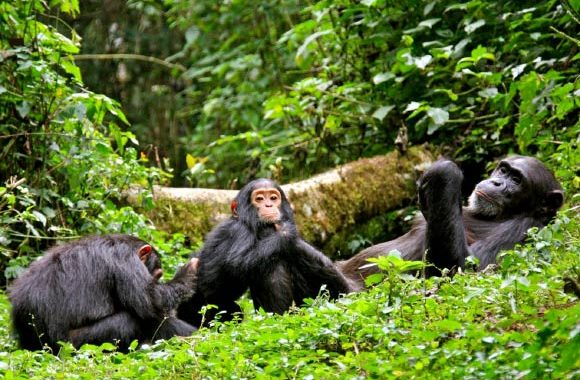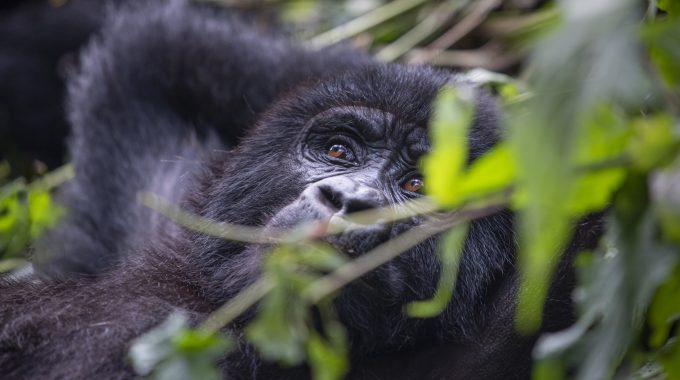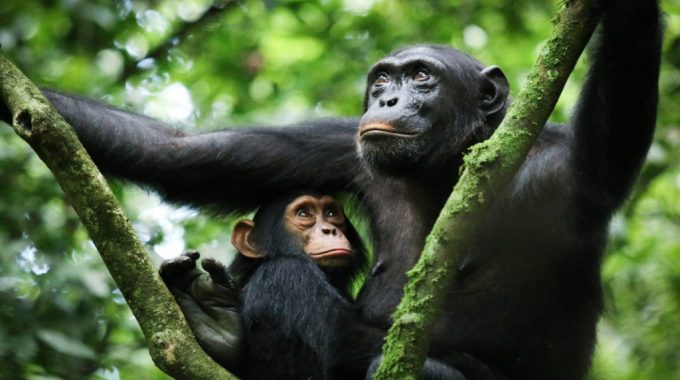Which African country has the most chimpanzees? The African country with the most chimpanzees is…
What is the biodiversity of Kibale National Park?
What is the biodiversity of Kibale National Park? Kibale National Park, located in western Uganda, is one of the most biodiverse and ecologically significant tropical rainforests in Africa. Covering approximately 795 square kilometers, it is characterized by a mix of dense lowland and montane forests, grasslands, and wetlands. Here’s a detailed overview of its biodiversity:

-
Primates
Kibale is renowned as the “Primate Capital of the World,” with 13 species of primates and one of the highest densities in Africa. These include:
- Chimpanzees (Pan troglodytes): Over 1,500 individuals, making it one of the most accessible places for chimpanzee trekking.
- Ugandan red colobus monkeys (Procolobus rufomitratus): rare and endangered, with a significant population here.
- Black-and-white colobus monkeys (Colobus guereza): Commonly seen in large groups.
- L’Hoest’s monkeys (Cercopithecus lhoesti): Known for their striking white beards and terrestrial habits.
- Blue monkeys (Cercopithecus mitis): Arboreal and highly adaptable species.
- Grey-cheeked mangabeys (Lophocebus albigena): A shy and elusive species.
- Vervet monkeys (Chlorocebus pygerythrus): Often found in the forest edges.
- Olive baboons (Papio anubis): Social and terrestrial, usually spotted in large troops.
- Potto (Perodicticus potto): A nocturnal primate known for its slow movements.
- Bush babies (Galago spp.): Small, nocturnal primates with large eyes adapted for night vision.
- Mammals
Apart from primates, Kibale is home to over 70 mammal species, including
- Forest elephants (Loxodonta cyclotis): a smaller and rarer subspecies of the African elephant.
- Buffaloes (Syncerus caffer): Found in forest clearings and open grasslands.
- Bush pigs (Potamochoerus larvatus): Common in the undergrowth.
- Giant forest hogs (Hylochoerus meinertzhageni): The largest wild pigs in Africa.
- Various antelope species, such as blue and red duikers (Cephalophus spp.).
- Leopards (Panthera pardus): Elusive and nocturnal predators.
- Civets (Civettictis civetta) and genets (Genetta spp.): nocturnal carnivores.
- Otters and mongoose species.
-
Birdlife
Kibale National Park is a globally recognized birding destination with over 375 recorded bird species, many of which are forest specialists or Albertine Rift endemics. Notable species include:
- African pitta (Pitta angolensis): A sought-after species for birders.
- Green-breasted pitta (Pitta reichenowi): One of Kibale’s star attractions.
- Great blue turaco (Corythaeola cristata): A striking and colorful bird.
- Black bee-eater (Merops gularis): A vibrant forest species.
- Yellow-rumped tinkerbird (Pogoniulus bilineatus).
- African grey parrot (Psittacus erithacus): Famous for their intelligence.
- Crowned eagle (Stephanoaetus coronatus): A top predator, preying on monkeys.
- Various sunbirds, kingfishers, and hornbills.
-
Reptiles and Amphibians
Kibale hosts a variety of reptiles and amphibians, though they are less studied:
- Snakes: Includes forest cobras, green mambas, and harmless tree snakes.
- Lizards: Such as chameleons, geckos, and monitor lizards.
- Frogs and toads: Many species thrive in the moist forest environment, including the endangered puddle frogs.
-
Insects and Butterflies
The park boasts a diverse population of insects, including:
- Butterflies: several hundred species, many endemics to the region.
- Beetles, ants, and termites: vital for nutrient cycling in the forest.
-
Flora
Kibale’s tropical rainforest is part of Uganda’s Albertine Rift biodiversity hotspot. It supports:
- 351 tree species, including:
- Mahoganies (Khaya spp.): Towering trees used for timber.
- Fig trees (Ficus spp.): A keystone species for many animals.
- Ironwoods (Cynometra alexandri): dominant in some areas.
- Medicinal plants: many local species with traditional healing properties.
- Epiphytic plants, including mosses, orchids, and ferns.
- Swamp vegetation: papyrus and aquatic plants in wetlands.
-
Ecosystems
The park includes a mosaic of habitats:
- Tropical rainforest: both primary (undisturbed) and secondary (regenerating) forests.
- Wetlands: Papyrus swamps and streams.
- Savanna grasslands: found in the northern parts of the park.
-
Conservation Significance
Kibale is a key conservation area in the Albertine Rift Valley, playing a critical role in preserving:
- Endangered species like chimpanzees and red colobus monkeys.
- Forest elephants, whose populations are under threat elsewhere.
- Biodiversity that supports ecological services, such as carbon sequestration and water catchment.
This diversity makes Kibale National Park not only a treasure trove of biodiversity but also a critical resource for ecological research, conservation, and tourism.



